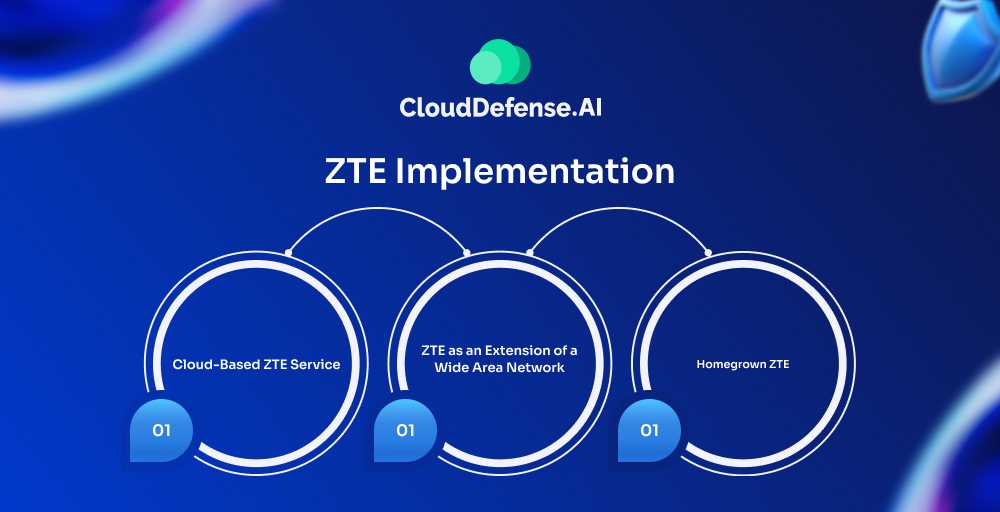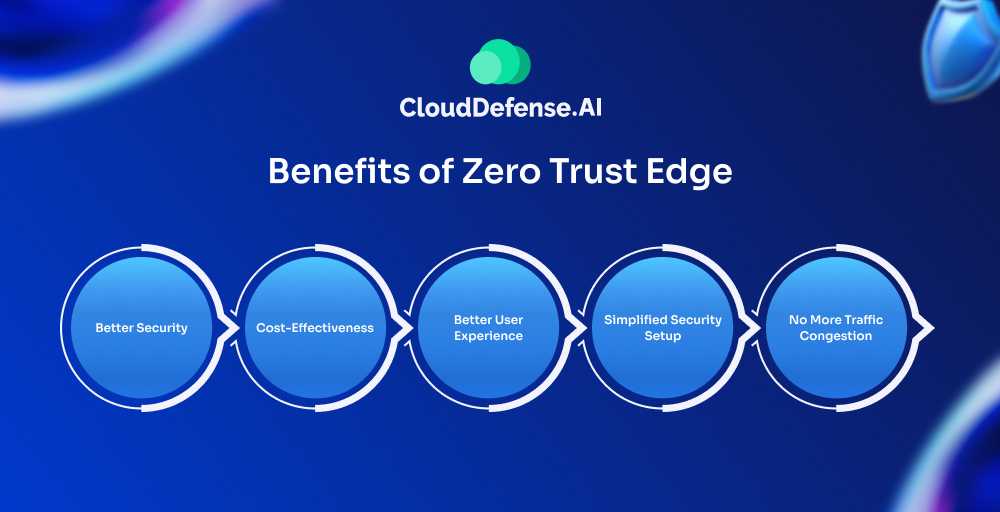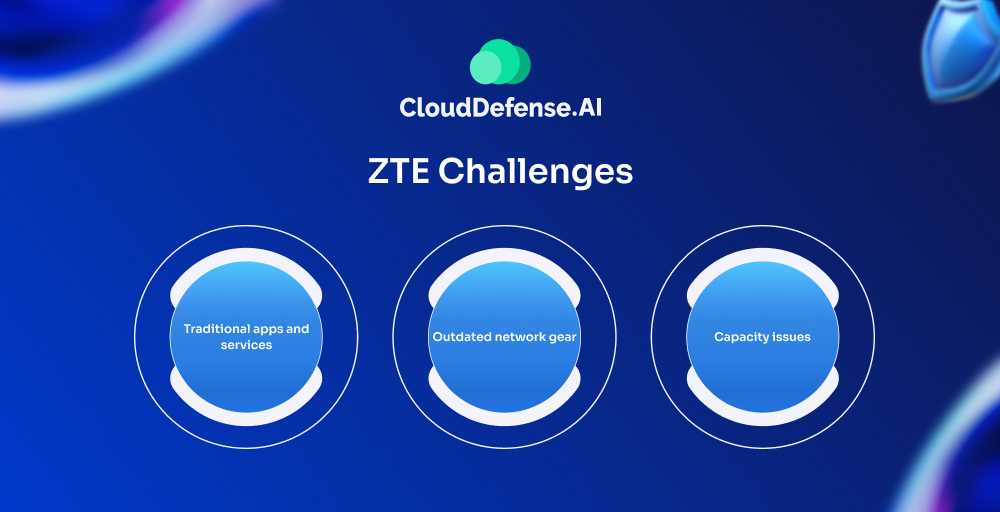What is Zero Trust Edge (ZTE)?
Zero Trust Edge, or ZTE for short, is basically a fancy way of saying “trust no one” when it comes to network security. It’s a new approach that assumes everyone and everything trying to connect to your system could be a potential threat.
To understand this better, let’s break down the two core components of ZTE:
Zero Trust:
- No automatic trust—everything and everyone must prove they’re trustworthy before being allowed access.
- Continuously authenticate and verify users and devices, rather than relying on a one-time check.
- It’s about securing access—not the perimeter.
Edge Security:
- Traditional security models often route traffic through centralized points, leading to latency and inefficiencies. ZTE pushes security closer to the edge—where data is created and consumed—ensuring secure access no matter the user’s location.
- Reduces latency by providing localized security enforcement, especially for users on the move (e.g., remote workers, cloud-based applications).
- Brings security closer to the source of the threat, ensuring faster responses.
Why Is Zero Trust Edge Important?
Remember when everyone suddenly started working from home during COVID? That pretty much killed the old idea of a secure office network. Now, with remote work being the new normal and businesses trying to connect with customers through all sorts of apps, we needed a new plan. That’s where Zero Trust Edge comes in.
The old way—relying on traditional VPNs—just wasn’t cutting it anymore. VPNs were overwhelmed by the massive increase in connections, and security teams were struggling to keep up. That’s where Zero Trust Edge (ZTE) steps in.
There are three big reasons why ZTE is becoming essential for businesses today:
- First, security teams need a way to ensure only legitimate traffic gets through, and that they can monitor everything in real time to stop any breaches before they happen.
- Second, the network engineers are realizing that security can’t just be an afterthought. It has to be baked into the infrastructure from the start—especially with all the new apps, devices, and cloud services businesses are using.
- Lastly, we need a reliable way for every device—whether it’s in the office, at home, or on the go—to safely access the internet, without putting the entire system at risk from malware or other cyber threats.
Basically, Zero Trust Edge is important because it’s helping businesses adapt to this new, work-from-anywhere world while keeping everything locked down tight. It’s not perfect, but it’s a whole lot better than crossing our fingers and hoping for the best.
How Does Zero Trust Edge Work?
The core principle behind Zero Trust Edge (ZTE) is simple: trust nobody, verify everything. Every time someone tries to access a resource or make a request on the network, ZTE steps in to check them out.
Here’s where it gets interesting. ZTE doesn’t just sit at one central point; it spreads its security controls across the network. These “edge” locations act like checkpoints, securing data right at the point of access. If there’s too much data or slow internet, some of this security is handled locally to keep things running smoothly.
ZTE relies on two big ideas:
- Cloud-based management for network and security: Think of this as having one central control panel for everything—security, access, and monitoring. It ensures consistency, reduces errors, and makes management easier by aligning all systems to the same rules.
- Super smart analytics tools: These tools act as the “brains” of ZTE. They constantly monitor network traffic, detect abnormal behaviors, and ensure everything is operating as expected. Since there’s so much data to process, these analytics are powered by the cloud for speed and efficiency.
When a company adopts ZTE, it gains a comprehensive view of its entire security and network landscape. Regardless of whether it is located in the cloud or on-premises, all aspects can be observed and managed from a singular point of access. The goal? Keep the system locked down tight while making it easy for users to do their work without hassle.
So how does ZTE actually function? Every time someone requests access, ZTE evaluates them:
- Who are they?
- What are they trying to do?
- Are they allowed to do it?
This verification process happens instantly, ensuring that only verified requests are allowed in. And the best part? For users, it’s practically invisible. They get seamless access, and ZTE makes sure everything is secure in the background.
ZTE Implementation

Alright, let’s break down how companies can actually put Zero Trust Edge into practice. There are three main ways to go about it:
1. Cloud-Based ZTE Service
This is the simplest option, like subscribing to a fully-managed security service. The ZTE service provider handles the heavy lifting by setting up security checkpoints (called Points of Presence, or POPs) around the world. Think of it like Netflix for security—you pay a subscription, and they manage everything for you.
Key Advantages:
- Minimal setup on your part.
- Full management by the service provider, including updates and maintenance.
- Scalable, with a global network of security checkpoints.
Ideal for: Companies that want an easy, hands-off implementation.
2. ZTE as an Extension of a Wide Area Network (WAN)
Here, companies integrate ZTE features into their existing Wide Area Network (WAN). This allows for some level of customization while leveraging the security of ZTE.
Key Advantages:
- Leverages existing infrastructure.
- Can offer more control than a cloud-based service.
Challenges:
- May involve a mix of different security rules for different parts of the system, which can create complexity.
- On-premises setups may not adapt as quickly as cloud-based solutions.
Ideal for: Businesses already using a WAN and looking to extend security with some flexibility.
3. Homegrown ZTE
For larger companies with substantial resources, a homegrown ZTE approach involves building a custom security setup using public cloud services. You can establish your own checkpoints, create your own security policies, and manage the entire system.
Key Advantages:
- Complete control over the design and configuration.
- Customizable to your exact needs.
Challenges:
- Requires significant time, expertise, and resources.
- Ongoing management of security trends and cloud services is necessary.
- Need for skilled IT professionals to maintain and update the system.
Ideal for: Big companies with the tech resources to build and maintain their own solution.
ZTE Implementation Checklist:
- Determine your company’s needs: What level of control, customization, and scalability do you need?
- Evaluate your existing infrastructure: Are you using cloud, WAN, or on-premises systems?
- Consider your team’s expertise: Do you have the internal resources to manage a homegrown solution, or would a managed service be more practical?
- Balance cost and complexity: A fully managed service might be easier, but can your business afford the ongoing subscription fees?
- Scalability: Will your chosen method grow with your company, especially if you’re expanding to remote teams or cloud-based environments?
Benefits of Zero Trust Edge

When it comes to securing your network, Zero Trust Edge (ZTE) brings some pretty compelling benefits that can make a real difference in today’s fast-paced, constantly evolving tech world. Here’s why it’s becoming a go-to for businesses looking to strengthen their security:
1. Stronger Security Across the Board:
ZTE operates on the simple, yet powerful idea of “never trust, always verify.” This means every access request is thoroughly checked before it gets through. No more assuming that someone inside the network is safe just because they’re inside. Whether your users are remote, in the office, or accessing resources from the cloud, ZTE keeps everything under lock and key.
2. Seamless User Experience:
The best part about ZTE? It doesn’t get in the way of productivity. It works quietly in the background, checking users, devices, and requests in real time. For your team, it feels just like a normal day—except they’re more secure. This seamlessness ensures that security doesn’t become a roadblock to doing business.
3. Simplified Security Setup
Instead of having a bunch of different security tools that might not play nice together, ZTE brings everything under one roof. This makes it easier to keep an eye on things and respond to threats. It’s like having one super-tool instead of a messy toolbox.
Some companies can even get away with using just one vendor for all their security needs. But it’s important to make sure whatever system they choose works well with what they already have.
4. No More Traffic Congestion
Traditional VPNs often sent all traffic back through the company’s main network, which could slow things down. ZTE uses cloud connections instead, so data doesn’t have to take the long way round. This means better performance, especially for people working remotely.
5. Reduced Attack Surface
Since ZTE constantly checks access requests and verifies the trustworthiness of every device and user, it significantly reduces your attack surface. It makes it harder for bad actors to sneak in, even if they manage to bypass one layer of security.
ZTE Challenges

A lot of companies are getting pushed into ZTE because of all the remote work happening now. But making it work smoothly? That’s another story. Here are the big challenges:
Traditional apps and services:
New web apps that play nice with modern identity systems? No problem. But those clunky old apps that use weird protocols? They’re a pain. Stuff like remote desktop connections and VoIP phones don’t fit neatly into the ZTE world yet. There’s no standard way to make them work, so it’s like trying to fit a square peg in a round hole.
Outdated network gear:
Once you’ve got all your computers and fancy new apps on ZTE, you’ve still got to deal with all those other gadgets. I’m talking about smart thermostats, security cameras, and who knows what else. Some companies have thousands of these things, and getting them all to work with ZTE is like herding cats.
Capacity issues:
ZTE is great for solving the immediate problem of “How do we keep our remote workers secure?” But it’s not quite ready to handle the massive amount of data flowing through big company data centers. Some businesses might need to move more of their stuff to the cloud before they can fully embrace ZTE for everything.
Final Words
The bottom line is that ZTE is promising, but it’s not a magic wand. Companies need to be ready for some growing pains as they make the switch. It’s like renovating your space while you’re still living in it—it’s going to be a bit challenging for a while, but the end result should be worth it.







